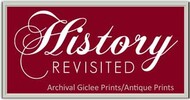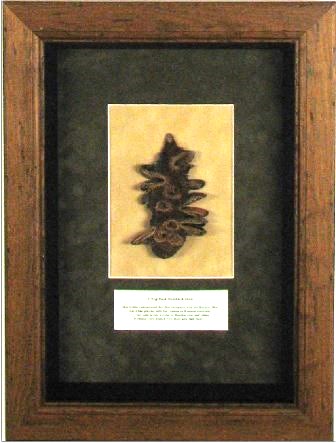 Loading... Please wait...
Loading... Please wait...All prices are in All prices are in EUR
Categories
- Home
- Blog History Revisited
- Gallipoli
Blog History Revisited - Gallipoli
May Gibbs: Successful Business Woman
Posted by ©Sandra Ker, CEO of the Antiquarian Print Gallery that began in 1989 in Adelaide, South Australia. on 11th Mar 2021
Australia's Early 20th Century "Influencer"
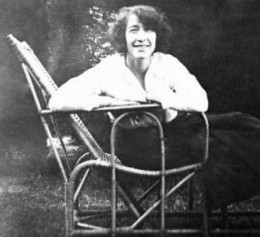
In 2012 I joined a small business mentor. Eager participants followed him around the wide brown country of ours. He was convinced that business success is a matter of finding a niche "an inch wide and a mile deep”. The bigger the problem it solves the more successful the business. My background is art and history. I had been researching May Gibbs (1877-1969) for an Australia-themed Illustrator print exhibition...of course! Ms. Gibbs, of ‘Bush Baby’ fame, was such a person. She would have ticked many of his commandment boxes to business success.
May Gibbs was adamant not to follow the fairy folklore model of Children's story telling. That was the dominion of European storytellers & illustrators. Here, she did step around “not reinventing the wheel” commandment. However, in so doing she focused on the bigger problem, the need for Australians to define their point of difference after Federation in 1901. Then there was the need for connection during World War I, not only to each other but to those far away fighting in the northern hemisphere. Where best to start than the incubator of future generations, children! So, N-O to fairies, mischievous pixies, & evil goblins. Fast Forward to 2020 during a Covid-19 Pandemic lockdown, I discover a new type of mentor/business trainer, Navig8biz.com. Their tagline is “Purpose. Passion. Legacy.” In these three words, again, I see the favorable comparison with May Gibbs.
Ms.Gibbs certainly had "Purpose" and "Passion" to identify that “big, hairy, audacious goal” that defines the brand and
 integrity of an entrepreneurial enterprise. ("Thank you Joanne Brooks") Cultural identity through our uniquely Antipodean imagery gave the idea of being "an Australian" a unique foundation on which to build. Her "Legacy" is embodied in the The Northcott Society & Cerebral Palsy Alliance that inherited her generous gift of branding/copyright after a long and rewarding career.
integrity of an entrepreneurial enterprise. ("Thank you Joanne Brooks") Cultural identity through our uniquely Antipodean imagery gave the idea of being "an Australian" a unique foundation on which to build. Her "Legacy" is embodied in the The Northcott Society & Cerebral Palsy Alliance that inherited her generous gift of branding/copyright after a long and rewarding career.
Childhood Memories, Inspiration of Purpose
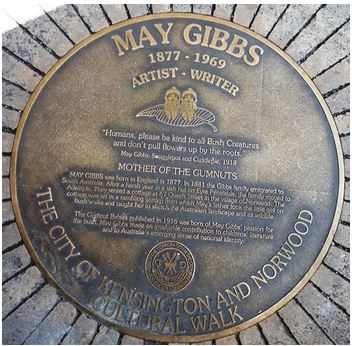
May Gibbs was four when her English family immigrated to Adelaide, South Australia, in 1881. They lived in Norwood. May Gibbs has a dedicated plaque on the Norwood Parade, corner of Queens St to prove it. However, her father's collaborative farming venture failed. Given the challenging inconstancy of soil types, traditional European farming techniques had wild degrees of success. The Gibbs' were not alone in their disappointment. Consequently, her family moved to Perth with other relatives. While playing with her Western Australian cousins, “…we came across a grove of Banksia trees and sitting in almost every branch were these ugly little men…” She had unknowingly identified her future Bad-Guys-No.1 = Tick.
Then there was the ongoing floral war between the Good-Guys, let's take Golden Wattle,
& native insect pests, Bad-Guys-No.2 = Tick, Tick. Conversely, she also employed the services of spiders to weave trampolines for Boronia Babies to bounce around on, so insects can be the friendliest of collaborators as well. May Gibbs may have been inspired by Australian native flora but a holistic approach cleverly recruited native bugs and fauna as well. As she grew familiar in this Antipodean environment, so did her familiarity with human activity in her adopted home. As Yoda would say, add those grand elements together, "a story you have". Traditionally for a story to have impact, it was necessary to build the tension between good and bad. Miss Gibbs was well on her way. However, she still needed to acquire additional skills to create the legend she was to become.
Chimney Pot Community in London
Aged 22, May traveled back to London. She studied at a Chelsea Polytechnic in 1901-04. She traveled back to England again in 1909 where she continued to complete her illustrating assignments for her British publisher. One such task was a fantasy featuring London Chimney Pot dwellers. She also had a more political edge to her chosen career path, that of drawing cartoons for the suffragettes cause. She was 17 years old when South Australian women had lead the world in gaining, not only the right to vote, but also political representation, in 1894. In 1901 the Federation of Australia adopted this stance of gender equality. YAY to South Australian enlightened colonial politicians! She was obviously an independent woman who dared to tread where others would not, but still no sign of the future source of her success. Ill-health made it necessary to return to Australia in 1913, this time to Neutral Bay in Sydney. Here she seized on another opportunity. Troops were leaving Circular Quay for Egypt and Europe, to fight for King and Country. She used her art training to draw portraits, maybe the last opportunity they would have.
Australian Soldiers & World War I

Australian soldiers on the “HMAT Nester” 1916
The poignancy of their leaving would not have been lost on her. Here were Australian labourers, farmers, butchers, businessmen, traveling to fight for an empire, ‘to do their bit’. With her time in the land of elves, fairies, pixies and dragons she had resolved to draw her inspiration from the Australian bush only, as this was the Australian reality. At this point she strays from Business mentor's successful business model aka “don’t reinvent the wheel, use what is already there". However, she does follow his success-mantra by insisting to ”stay uniquely you”. May Gibbs certainly did. Indeed, she defined the first generation of sovereign Australians. This she did by providing those unique points of difference, our zoology, entomology, ornithology and botany.
Bush Baby Facilitator
It started with an artist's innocent rendering of a friend's toddler finding comfort with his best furry buddy, a much-loved puppy. Little did she, or he, know it would snowball into a life-long career of native-flora themed babies all with the same cute bottom, the epitome of innocence and vulnerability. How could we not but love them?
Forging the Post-Federation Australian Identity
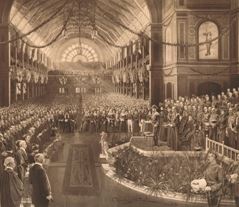 There is an undeniable recurring theme in all of her subsequent illustrations, that were fit-for-purpose to address the Australian need to define an identity. Bush Baby illustrated cards, calendars etc were sent to sons, husbands and fathers in the trenches of Gallipoli and the Western Front in France. Memories of home sent by loved ones, especially of the younger variety, would have been a powerful medicine. May had profoundly captured that need and desire for a “oneness”, to show support and, in turn, be supported.
There is an undeniable recurring theme in all of her subsequent illustrations, that were fit-for-purpose to address the Australian need to define an identity. Bush Baby illustrated cards, calendars etc were sent to sons, husbands and fathers in the trenches of Gallipoli and the Western Front in France. Memories of home sent by loved ones, especially of the younger variety, would have been a powerful medicine. May had profoundly captured that need and desire for a “oneness”, to show support and, in turn, be supported.
Through our unique flora and fauna, be they mammals, reptiles, insects, amphibians, May Gibbs identified that which connected us as a nation. She turned the immigrant fear of the unknown into the known: with respect to nature, she identified what harmed, healed and helped, just like Aboriginal dream-time stories.
Lessons of Environmental Awareness
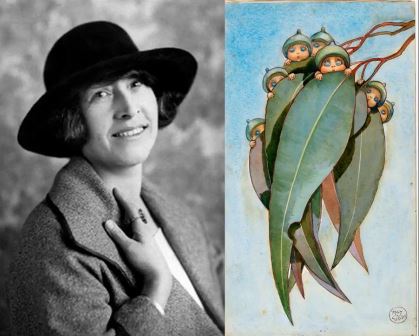 In 1986 I worked at the Barr Smith Library. During lunchtime I wondered into the audio library. It was here I found a radio recording of an ABC presenter interviewing May Gibbs in 1969, the year of her death. The presenter asks May Gibbs how she discovered the Bush Babies. May Gibbs replied, “Oh! My dear, they found ME”. Silence. So the legend is alive and well, as are the Babies that dwell in the native bush all around us to this very day. In many ways May Gibbs did not invent anything new. She echoes the very wants and needs of many today, to take care of natural habitat aka take care of that which takes care of us all!
In 1986 I worked at the Barr Smith Library. During lunchtime I wondered into the audio library. It was here I found a radio recording of an ABC presenter interviewing May Gibbs in 1969, the year of her death. The presenter asks May Gibbs how she discovered the Bush Babies. May Gibbs replied, “Oh! My dear, they found ME”. Silence. So the legend is alive and well, as are the Babies that dwell in the native bush all around us to this very day. In many ways May Gibbs did not invent anything new. She echoes the very wants and needs of many today, to take care of natural habitat aka take care of that which takes care of us all!
Paul Kelly wrote the words in his Aboriginal tracker solo in One Night the Moon: "This land is me (not the Corporations, banks or stock exchange)...this land owns me (the rock, water and animal in the tree...you only fear what you don't understand)"
True Measure of Success, a Charitable Legacy
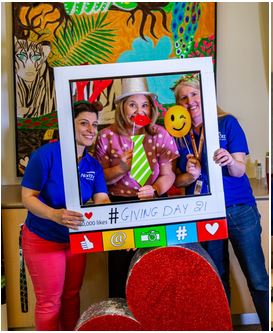 Today May Gibbs legacy has given a powerful benefit to The Northcott Society & Cerebral Palsy Alliance in New South Wales. Many entrepreneurs support causes that have touched their lives, and some it is their biggest "WHY". Mine is Neurological research, be it Dementia, Parkinson's Disease or Multiple Sclerosis.
Today May Gibbs legacy has given a powerful benefit to The Northcott Society & Cerebral Palsy Alliance in New South Wales. Many entrepreneurs support causes that have touched their lives, and some it is their biggest "WHY". Mine is Neurological research, be it Dementia, Parkinson's Disease or Multiple Sclerosis.
Her stories are as popular today among 25 million Aussies as they were with 4 million Australians during 1914-1918. May Gibbs is a lesson to us all, but in the post suffragette reality we live, a reminder to all genders to follow your dreams, or even better let them find you!
© Sandra Ker, Adelaide, South Australia, www.historyrevisited.com.au
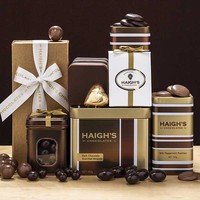
South Australia Confectionary, Colonial German Migrants & World War I
Why did whole German villages migrate to a British prototype colony? For all of Adelaide's aspiring to be "A slice of London in the Antipodes", the colony attracted a large Lutheran population by virtue of Adelaide's religious liberty and status as a Paradise of Dissent. This new British settlement coincided with Frederick William III's determination to united [...]
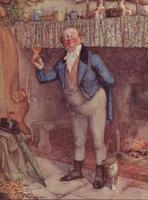
Modern Pickwick Club, Adelaide Students, ANZAC, WWI
The Power of Belonging: THE MODERN PICKWICK CLUB, Adelaide "Pickwickians": An Ancestral Treasure of Adelaide, 1934. This is a lesson of "Birds of a feather stick together". A curious battered item appeared in a cache of ancestral photos. Entitled "THE MODERN PICKWICK CLUB - Past and Present Members, July 28, 1934", the faces were unsmiling, standard [...]
Recent Posts
- » Lady Sarah Lennox, King George III & The Honourable George Napier
- » Schomburgk's Botanic Garden & Park Plan, 1874
- » "City of Adelaide" Clipper Ship - What is Old Is New Again
- » Napoleon, Hudibrastic Poetry, Doctor Syntax & the Power of Satire
- » Colonial Melbourne to Albury "Parlour Car" Photo Connects to Adelaide Past & Present
